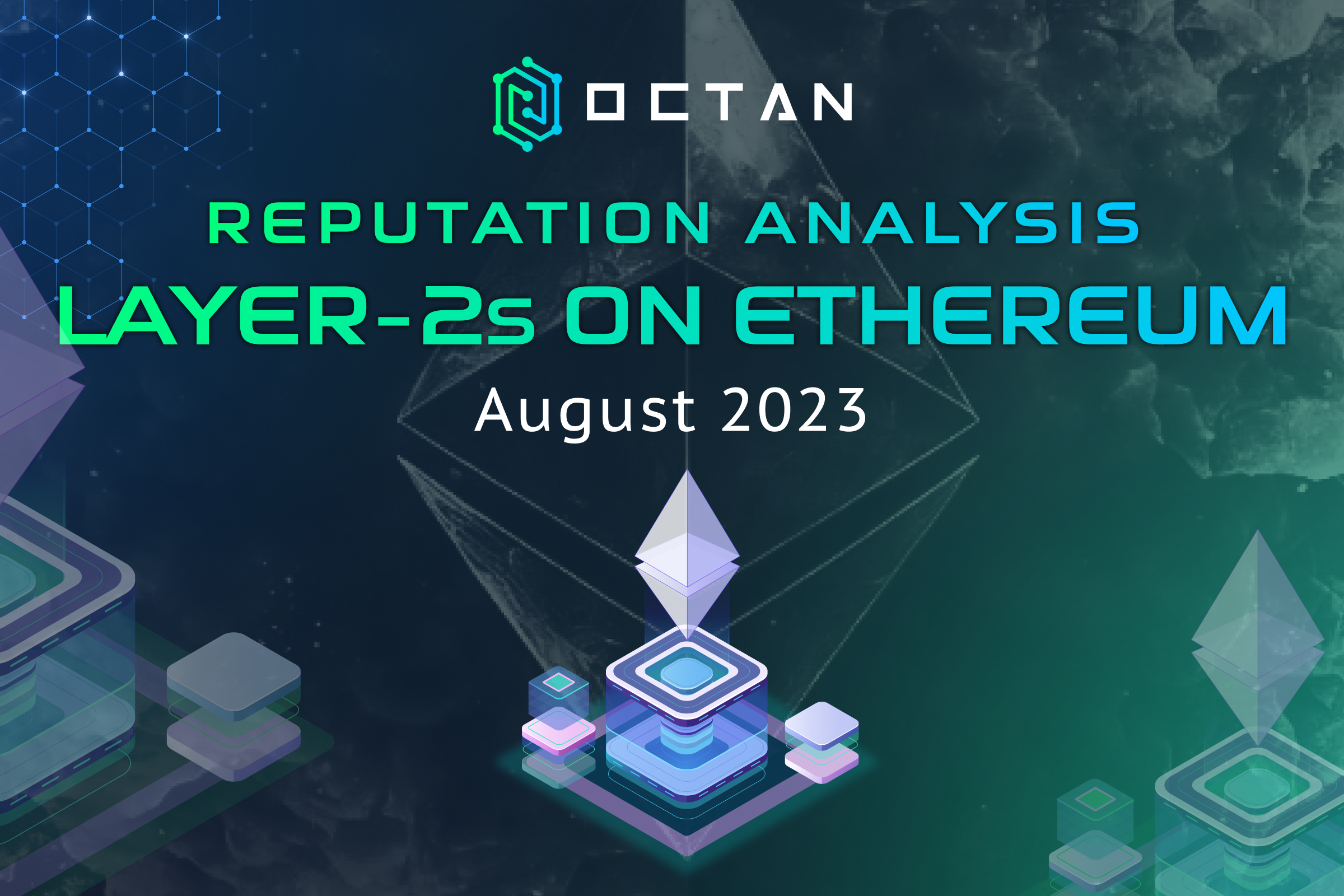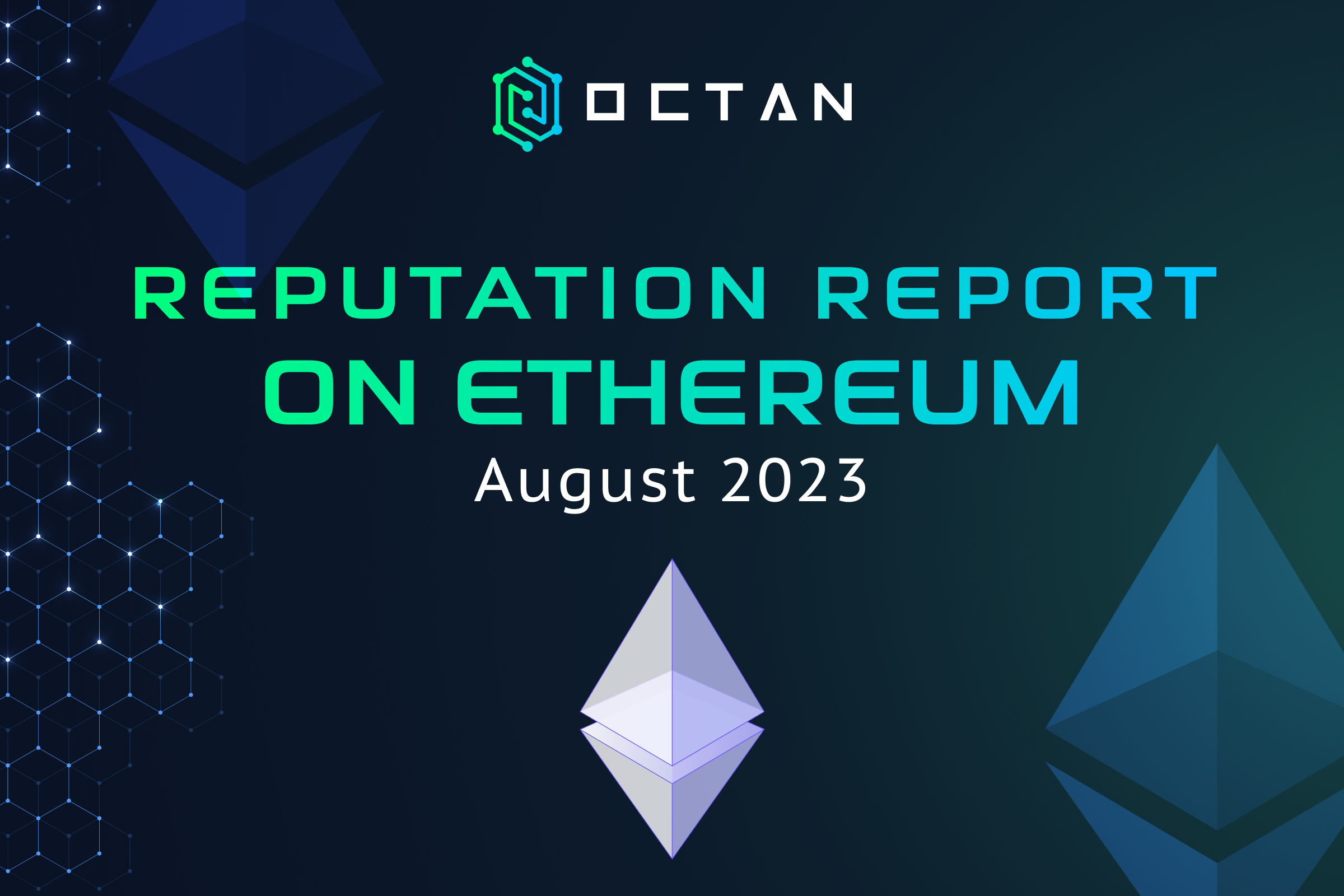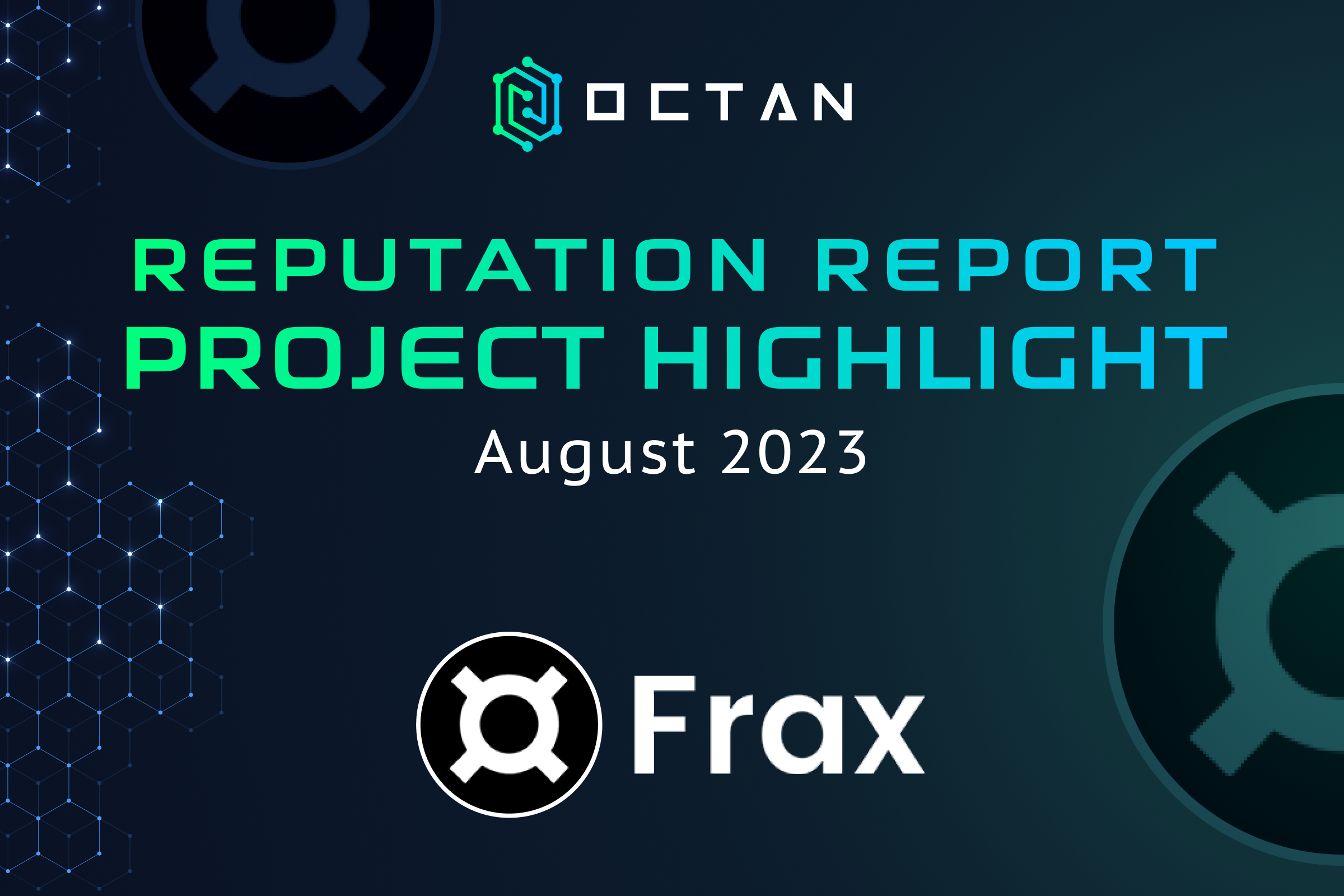After the Shanghai upgrade, an important upgrade of Ethereum to enable staking withdrawal, liquid staking derivatives are emerging as a liquid alternative to ETH. This article analyzes the reputation of liquid staking protocols on Ethereum. It is interesting to know that Lido and Ether.fi, among others, have highest reputation scores, 858 and 186, respectively. Octan’s Reputation Ranking System (RRS) is inspired by Google’s PageRank, a powerful onchain analytics engine that uses advanced mathematical pairwise ranking algorithms to compute the reputation scores of users and other entities within the Web3 ecosystems.
Reputation Scores: an overview on Ethereum
Invented by Octan Labs, Reputation Score (RS) is a metric to measure the trustworthiness and reliability of an account within a group of users, under certain criteria. The higher the Reputation Score, the more important the account is. RS captures Web3 user activities and behaviors via on-chain records: transactions, contract interactions, transactional volume, and gas spent; providing a universal, comparative, and quantitative measurement of the reputation of accounts within communities and the entire space. By analyzing graphs of transactions recorded on chains, Octan RRS employs sophisticated ranking algorithms to calculate the reputation scores of accounts (both contracts and individual wallets – EOAs), making it a highly valuable metric for measuring and tracking social insights in the dynamic and rapidly evolving Web3 ecosystems.
Before investigating the reputation of the most popular liquid staking derivatives, we have an overview about the reputation score of entities on Ethereum Ecosystem. It is worth comparing and highlighting the importance of rollup-L2s in the next section. Readers can find more in the full Octan comprehensive reputation report on Ethereum. The analysis covered a block range spanning from 16,000,000 (Nov-18-2022) to 17,323,369 (May-23-2023), with a total 1,000,000 reputation points distributed over 32M+ computed addresses on Ethereum.

Regarding the non-zero EOAs (i.e. unique active wallets – UAWs) group, we divide into six partitions based on ranges of reputation scores. This is to segment and compare user quality of contracts, dapps and protocols. Highest partition is featured by a few hot wallets of the top centralized exchanges, hence, has super high reputation scores. The very high partition also contains a lot of centralized exchanges’ hot wallets and custody wallets of financial institutions. Most wallets fall in Medium and Low ranges. Uncertain partition contains wallets with few transactions and being less active.


In the Top 10 contracts by reputation scores, after excluding the highest partition, #10 Coinbase Commerce (a contract for payment) has lowest average RS per UAW ~ 0.005, while #12 zkSync Bridge and #13 Starknet Bridge contracts have high average RS per UAW ~ 0.03, triple greater than average RS of medium users. If a contract has higher average RS per UAW, higher quality of users the contract has, similar reasoning for dapps.

Liquid Staking Protocol Analysis
Liquid staking protocols on Ethereum allow users to stake their ETH tokens for PoS while still maintaining liquidity. This means that users can earn staking rewards without having to lock up their tokens, which can be beneficial for users who want to participate in DeFi or other applications that require liquidity. Various types of liquid staking derivatives (LSDs) are issued by liquid staking protocols, which pool together user’s staked assets and participate in Ethereum’s Proof-of-Stake consensus mechanism. In return, the protocol issues LSDs to users, which represent the amount of their staked ETH. The LSDs then accrue staking rewards, which are automatically distributed to users. LSDs offer a number of advantages over traditional staking. First, they allow users to maintain liquidity, as they can freely trade their LSDs on decentralized exchanges. Second, they allow users to participate in other DeFi activities, as LSDs can be used as collateral in lending protocols or deposited in yield farming pools.
Here are some of the benefits of using liquid staking derivatives on Ethereum:
- Liquidity: LSDs allow users to maintain liquidity, as they can freely trade their LSDs on decentralized exchanges. This means that users can access their staked assets at any time, without having to wait for the unbonding period to expire.
- DeFi participation: LSDs can be used in other DeFi activities, such as lending and yield farming. This allows users to earn additional yield on top of their staking rewards.
- Simplicity: Liquid staking protocols make it easy to stake assets and earn rewards. Users simply deposit their assets into the protocol and start earning rewards immediately.
Here are some of the risks of using liquid staking derivatives on Ethereum:
- Protocol risk: Liquid staking protocols are centralized entities, and there is always the risk that they could be hacked or go offline.
- Impermanent loss: When using LSDs in yield farming pools, there is the risk of impermanent loss. This is a loss that occurs when the price of the underlying asset changes relative to the price of the LSD.
- Deviated price: price of LSDs is normally not the same ETH price and varies a bit from each other, although the amount of LSD tokens universally represents the equivalent amount of staked ETH. This is because each LSD token implies a different staking yield depended on and offered by the protocols.
- Regulatory risk: The use of liquid staking derivatives is still in its early stages, and there is a risk that regulators could take action against these protocols.
Overall, liquid staking derivatives offer a number of advantages over traditional staking. However, there are also some risks associated with these protocols. It is important to carefully consider these risks before using liquid staking derivatives.
There are a number of popular liquid staking protocols available on Ethereum. In the following, we will investigate the top liquid staking protocols, their governance token and their reputation score, as well as the liquid staking derivative (LSD) tokens of centralized exchange for comparison. Total 10.57 million ETH is staked to secure Ethereum network, valued $19.6B USD as statistics of 26 July 2023 on DefiLlama.

Now, we will look closer to the users of liquid staking protocols. Except Stakehound, all other LSD tokens have most UAWs falling in experience and medium partitions. Although the numbers of UAWs on LSDs are not large but average RS of UAWs of LSDs are much higher than average of experience partition (~0.09), showcasing a great quality of users on Ethereum. Unsurprisingly, Lido has the highest reputation score and the number of UAWs, among others. Binance ETH staking (wbETH) has the best user quality as its average RS per UAW (excluding hot wallets of centralized exchanges) is 2.93, much higher than the average of experience range (~0.09). Readers find the following table to explore the reputation score of the protocol’s governance token, and to see the interest and engagement of the community regarding the liquid staking platforms.

Octan Network – Reputation Ranking & Onchain Analytics
Establish Trust and Credibility in Web3
Octan Network is an award-winning data analytics provider in the Web3 space, achieving recognitions from industry-prominent organizations: BNB Grant DAO on Dorahack, Web3 Matching by BNB Chain, Octopus Accelerator Program, DFINITY Developer Grant Program.
At Octan Network, instead of focusing on cash-flow & financial analytics, we use our unique Ranking Reputation System (RSS), inspired by Google’s PageRank, to provide reputation and ranking scores for accounts across chains and applications. By qualifying, classifying, evaluating, and extracting social insights from Web3 entities, our system provides the best quality analytics and the most multi-dimensional insights on Web3. Check Octan comprehensive reputation report.
Octan’s onchain analytical reports provide a comprehensive view of the Web3 ecosystems and its entities. These reports, produced by Octan data analysis experts, offer reputation scores of notable entities and segmentation, providing valuable social insights and social interaction within the Web3 space. Furthermore, Octan offers visualizations showcasing relationships and connections between Web3 entities. This allows clients to easily comprehend and interpret the reputation data generated by Octan.
Segmentation on Web3 users: By quantifying on-chain data into reputation scores, analyzing insights and applying them becomes easier than ever before. Octan provides services for classifying, evaluating, and identifying the quality of Web3 users at a very affordable cost. Clients only pay for the specific services they require, allowing for cost-effective customization.
Onchain Analytics platform: Currently, Octan has completed the onchain data processing pipeline, infrastructure, analytics and reputation ranking system. In the future, the analytics platform will be released, allowing clients more controls over monitoring and collecting data about Web3 social insights. Clients will be provided with trial accounts to use without any charges. Major features are:
- Dashboard: Allow the creation of dashboards to track insights of specific blockchain networks or specific entities.
- Tracking: Monitor the activity trends of one or multiple entities within a blockchain.
- Comparison: Compares groups of Web3 entities or blockchain networks based on specified criterias.
- User segmentation: Classifies Web3 user groups based on multi-scheme reputation scores Project insights: Consolidates and provides data on the activities of a designated Web3 project. Extracts and evaluates the quality and behaviors of Web3 users interacting with the project contracts.
- Contract explorer: Queries and performs in-depth analysis for specified contracts.
- Visualization: Visualizes the onchain connections and relationships of selected entity groups with other entities within the same blockchain network.
Octan comprehensive onchain analytics includes various products and services to track, analyze, and qualify social insights within Web3 graphs. Visit our Gitbook at https://docs.octan.network/ to learn more.




